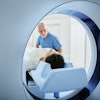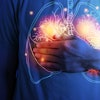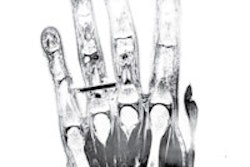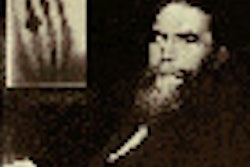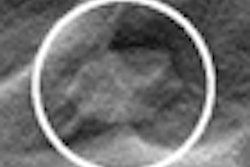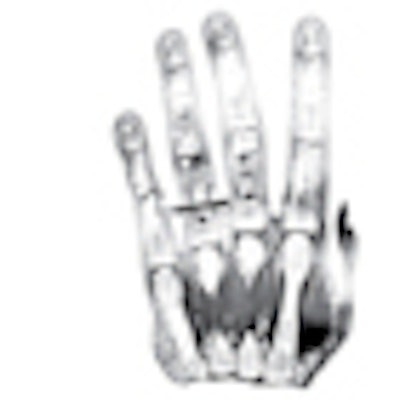
The global imaging community is primed for the first International Day of Radiology (IDoR) on Thursday 8 November. Radiological societies from across the world will host a series of events to promote the specialty among the general interest and specialist media, as well as among the general public and other medical disciplines.
 The five themes of tumor prevention, detection, staging, treatment, and follow-up are represented in the five fingers of the MR image of the hand, which is the symbol of IDoR.
The five themes of tumor prevention, detection, staging, treatment, and follow-up are represented in the five fingers of the MR image of the hand, which is the symbol of IDoR.
"The IDoR will be celebrated on 8 November, the day on which, in 1895, W.C. Röntgen discovered x-rays," said Dr. Lorenzo Derchi, chairman of the communication and external affairs committee of the European Society of Radiology (ESR) and head of emergency radiology at the University Hospital of Genoa in Italy. "This is not a celebration of just the technical capabilities of radiology but a chance to make it more visible to the public as each participating society prepares events and congresses in its own country. An invitation to celebrate has been sent to radiological societies throughout the world, be they national societies or subspecialty and allied sciences societies."
A joint initiative of ESR, RSNA, and the American College of Radiology, IDoR aims to raise awareness of the significance of imaging in modern medicine, underline its role in patient care, and improve the image of the radiologist as both the professional behind the equipment and pivotal medical team player. The organizers plan to achieve this through media-attended meetings, open days at facilities in hospitals, and invitations to patient associations to visit departments and attend lectures and presentations on imaging.
"The linking theme of all initiatives is oncologic imaging. Events should stress the importance of radiology and well-trained radiologists for cancer patients and in oncologic diseases," Derchi said.
 A booklet about the history of radiology and another dedicated to oncologic imaging created by ESR in collaboration with the International Society for the History of Radiology have been sent to all participating societies, according to Dr. Lorenzo Derchi.
A booklet about the history of radiology and another dedicated to oncologic imaging created by ESR in collaboration with the International Society for the History of Radiology have been sent to all participating societies, according to Dr. Lorenzo Derchi.
Of particular note will be radiology's role in tumor prevention through early diagnosis and screening, as exemplified by mammography breast screening. Tumor detection in symptomatic patients with protocols tailored to the clinical suspicion will be highlighted, as will how radiologists choose optimal technology for tumor staging and detecting metastases depending on tumor type.
Mini-invasive therapies for specific neoplasms are increasingly used and validated as alternatives to conventional surgery, so interventional treatment will also come under the spotlight, as will new techniques to monitor the efficacy of these therapeutic advances. When using antiangiogenic drugs, for example, there is at first a decrease in intratumoral blood flow that has to be detected shortly after initiation of therapy to identify responsive patients who will benefit from the therapy and those in whom other drugs should be used, according to Derchi.
"These five subtopics are represented in the IDoR banner (www.idor2012.com), which shows a hand with a ring, depicted by a modern MRI machine, and pays homage to the first radiological image ever made, that of Mrs. Röntgen's hand," he said. "Radiological societies will run the main events, but radiologists can celebrate the IDoR in each hospital by talking to patients on this day to explain to them how the examinations they are going to have, or just have had, have been tailored to their specific needs."
He urges radiologists to emphasize that the results do not come out directly from the machine but are the end product of a "medical act" that begins with reading requests and previous medical history. It is important to justify how the examination's benefits outweigh any risks, plan how the examination can answer the clinical question about a patient's symptoms, optimize the technical parameters to ensure performance, interpret the images in light of the request, symptoms and clinical suspicion, and also communicate a coherent report to the relevant parties, he noted.
For more information about the IDoR, including the banner and two short films, click here.
